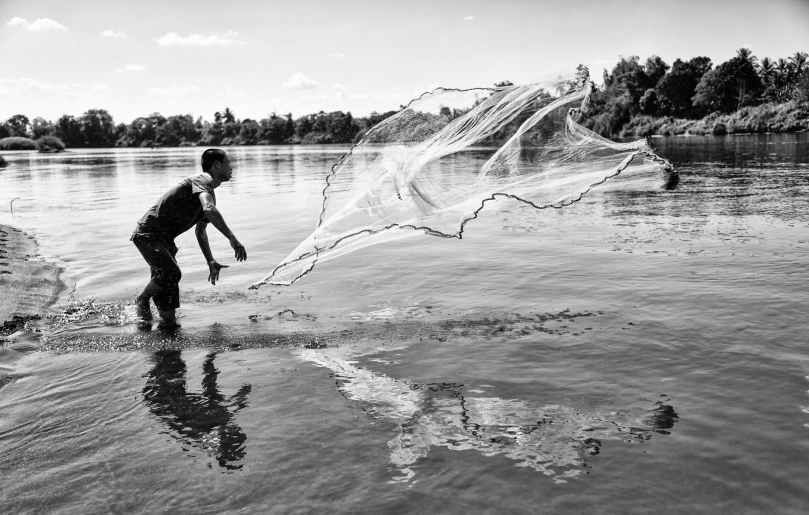Dear Nicole,
I agree with your opinions on the article. The article appears to be more of a photo-journalistic piece rather than an informative article, and the author could have better used the compelling images to educate the public on the threat of plastic pollution to marine ecosystems. Other than the indirect problems of plastic pollution you mentioned in your response, plastic debris can also cause direct problems like entanglement, drowning and starving.
I find the ‘hitch-hiking’ point you brought up interesting, as I had not known about this before reading your response. Having plastic debris in the ocean can allow for more dispersal pathways of marine organisms that may not originally be able to travel as far, and cause unpredictable harms in areas that were not possible previously.
Microplastics are pieces of plastic less than 5 millimetres in size. Microplastics are formed when larger plastic debris degrade into smaller pieces or come from resin pellets from manufacturing industries, or microbeads present in some beauty products, as well as from other sources. It is certainly true that microplastics have a large impact on marine organisms. As mentioned by the photographer quoted in the article, the manta rays feed on plankton. The presence of plastic trash in their surroundings, when degraded, form microplastics that the plankton may consume. The manta rays will then have the microplastics in their systems when they consume the plankton. Additionally, through the food web, the effects of such bioaccumulation in other organisms can eventually transmit to humans that consume seafood. It is pertinent to realise that our actions will eventually return to hurt us. The area in which the photos were taken is in the waters of Indonesia – after China, Indonesia is the country that contributes the most to marine plastic pollution. This could be largely due to the single-use plastics prevalent in Indonesia, which is also a common sight in Singapore.
Recently, National Parks Board (NParks) conducted a microplastics analysis workshop on the 27th January 2018, to educate members of the public about microplastics via the hands-on experience of collecting microplastics and a panel discussion. While helping out for this event, and another microplastics collection on another date, I was shocked by the number of microplastics collected at both sites. It is dismaying to realise the amount of microplastics present on our shores. Through conscientious efforts to reduce plastic use and increase recycling efforts, I hope that the effects of plastic pollution can be gradually abated. I am of the belief that it is better to do something than nothing at all. Our choices and actions regarding plastic use will determine the future not only of marine life but all of earth’s organisms.
In addition to education and awareness, as you mentioned, Indonesia’s government and governments of the world’s countries need to improve legal categorisations of plastic trash (biodegradable, recyclable etc) and enforcement procedures to crack down on plastic littering. Doing so can increase the sustainability of the fight against plastic pollution.
In reality, marine and coastal ecosystems globally face the constant threat of plastic pollution. In a recent study, plastic debris can serve as a medium for alien species to colonize in an area far away from their natural habitat. Known as ‘hitch-hiking’, species such as barnacles, molluscs and algae are able to attach on the hard surfaces of plastics and are carried away by the currents that eventually settle down away from their natural habitat. These pose major threats for native species in the area, as alien species may become invasive, possibly wiping out native species if left uncontrolled.
Another problem caused by plastic pollution is the health-threat posed to marine organisms. As micro-plastics resemble the phytoplankton that some marine organisms consume, ingestion of plastic material hinders growth and causes internal injury which eventually results in death. Not only are marine organisms affected, but even ecosystems such as coral reefs are taking a toll by contracting diseases from the introduction of bacteria on plastics according to a news article by TODAY.
These are only a few issues that stem from ocean pollution, but were however not mentioned in the article. This could undermine the actual severity of the issue because ocean plastic pollution is a global problem that affects almost all aspects of marine life. However, the general masses may not realize the severity of ocean plastic pollution, for which public education is needed to increase awareness. Perhaps the editor of the article (Amanda Cashmore) could have brought up various consequences of plastic pollution to add more weight and severity of the problem to her words, instead of quoting the photographer. Her input could further emphasize the importance of keeping our waters clean and persuade others to bear in mind the consequences of irresponsible plastic littering.


